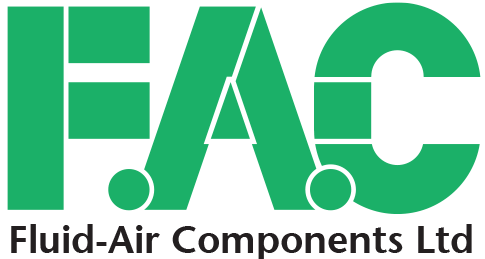A pneumatic cylinder operates by converting energy from compressed air into mechanical motion. Pneumatic cylinders are used in many industries and applications to automate processes and improve efficiency. Common applications include bottling plants, automotive assembly lines, and medical equipment manufacturing.
The basic components of a pneumatic cylinder include an outer casing, piston rod, piston head, seals, and ports for letting air into and out of the cylinder. When pressurized air enters one side of the cylinder it pushes against the piston head forcing it up or down depending on which port the pressure is being applied to. This force causes the rod to either extend or retract, the speed at which movement occurs depends on how much air pressure is applied; higher pressures will cause faster speeds while lower pressures result in slower speeds. There is a range of fittings with regulators and direct mounting valves available to be able to control the speed of the rod extending and retracting. Using these fittings and valves allows the user to be able to individually fine-tune the speed of the rod extending and retracting to suit their application.
Pneumatic cylinders come in various bore sizes and stroke lengths, each designed to meet specific needs depending on the application. The most common cylinders are double acting, single-acting sprung out, single-acting sprung in and through rod.
We offer a full range of ISO 15552, ISO 6432, and ISO 21287 cylinders. Custom cylinders can also be specified and quoted for special applications. Our cylinder ranges are available with many different rod materials including 304 stainless steel and 316 stainless steel as well as several seal material options including FKM/Viton for high-temperature applications. All cylinders are available with a range of mounting options including rod fork ends, front trunnions, rear trunnions, and swivel ball joints.
We have access to all the leading manufacturers and can offer Norgren cylinders, Festo cylinders, Pneumax cylinders, Parker cylinders and Camozzi cylinders among others.
We have access to all the leading manufacturers and can offer Norgren cylinders, Festo cylinders, Pneumax cylinders, Parker cylinders and Camozzi cylinders among others.
Pneumatic cylinders are widely used within the industrial sector for various reasons. For example, their relatively small size makes them easy to install and integrate into existing systems or machinery. Additionally, pneumatic cylinders don't require a great deal of power because they use air pressure instead of electricity, making them energy-efficient and cost-effective. Furthermore, these components provide high repeatability which ensures that operations remain consistent and reliable over a long period of time.
Speak to one of our expert sales team on 01634 297298 or send us details of your application/requirement at sales@fluid-air.co.uk.

